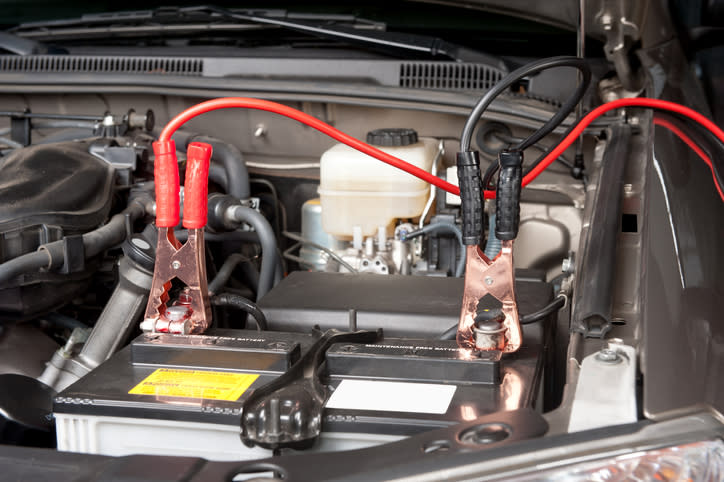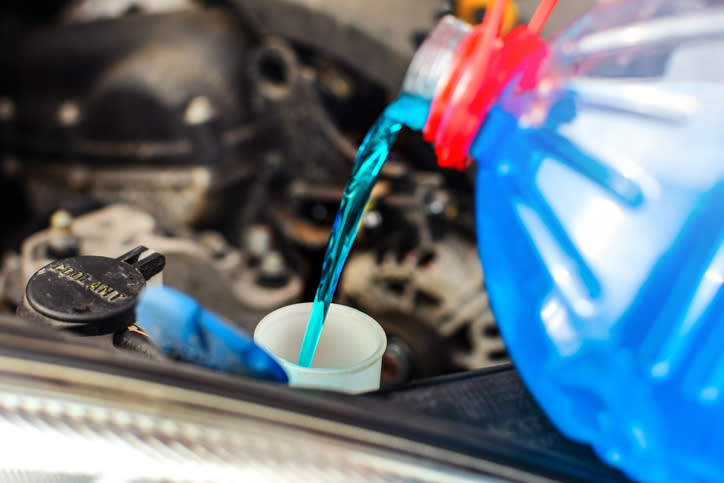10 Things You Should Do to Prolong Your Car's Life

New and used car prices are at record highs. One way to save money on buying a new (or new-to-you) car is to prolong the life of your existing vehicle. Or, if you plan to sell your vehicle, proper car maintenance will increase its resale value. Routine oil changes are a no-brainer, but there are additional routine maintenance measures that can easily be overlooked. That’s why we compiled this handy list of basic car maintenance tips that can improve the quality and reliability of your car and save you money in the long run.
Here are 10 simple things that can have long-term effects on your car’s reliability. While this isn't a comprehensive list, it highlights some of the most overlooked car maintenance items that can help cut down on unnecessary car repair expenses and keep your car running smoothly.
1. Wash Your Car Regularly

While it’s tempting to just rely on nature’s car wash, regular rain showers shouldn’t be your preferred method of washing your car. Unwashed dirt can lead to scratches or chips and can even fade your car’s color. Regular exposure to the elements, especially salt in winter, can also damage a vehicle’s paint and lead to damaging rust on your car’s undercarriage.
2. Check Your Battery

A car battery lasts an average of two to five years. You can prolong the life of your battery by following some basic maintenance tips. You should check your battery annually and keep an eye out for warning signs that indicate your battery is nearing the end of its lifespan. These include dim headlights and a car that is slow to start or won’t start at all. You can test your car’s voltage with a voltage meter that can be found at automotive parts stores or online. A battery that registers at 12.39 volts or less is considered discharged.
You can revive your vehicle by giving it a jump start if you left your lights on, but having to regularly jump your battery is a sign it needs to be left on a battery charger for at least 24 hours. If after that your battery still won’t reliably start your vehicle, you likely need a replacement, though a test of your car’s charging system should also be performed. This can be done at almost any automotive shop for a minimal cost (less than $40).
You should also check your car battery's terminals to make sure the connections are clean and free of debris buildup. Also make sure the wires from the connectors are tight and without frays or breaks.
3. Replace Your Air Filters
Air is drawn into your vehicle through its intake, where it’s filtered and directed to the engine’s combustion chambers. If anything interrupts this flow of air, the engine will sputter or stall.
Most cars have at least one particulate filter for the air that is being sent into the engine for combustion. That engine air filter requires regular cleaning or replacement. Replacement is nearly always the better option. Rarely does a “lifetime” filter actually last the life of the car. Most air filters require replacement about every two oil changes, depending on the climate, contamination, and air quality where you live. Filters are cheap enough that more frequent changes are better.
Other filters that are important to your vehicle’s operation are fuel and oil filters. Use only quality filters or insist that only quality (preferably OEM) filters be used. Your owner’s manual will have specific intervals for oil and fuel filter replacements. Follow these manufacturer’s recommendations rigidly.
4. Check Fluid Levels Regularly

The fluids in your vehicle include engine oil, windshield washer fluid, grease, brake fluid, power steering fluid, and likely transmission fluid. Some engines may have other fluids as well, such as diesel exhaust after-treatment.
All of these fluids have some way to access their fill level, so you’ll know how much is in there. Most also have a way to determine how clean the fluid is. Motor oil and transmission fluid are accessed with dipsticks located inside the engine compartment. Those sticks should be marked with “hot” and “cold” indicators to show where levels should be if the engine is hot (at operating temperature) or cold. These should be checked regularly. Failure to maintain your car’s oil can void your warranty and lead to premature engine failure.
Windshield washer fluid is held in a reservoir that is usually visibly accessible from under the hood. Fill levels are generally assessed by looking at the filler spout or reservoir and viewing the fluid seen through the semi-opaque container. It’s difficult to over-fill this reservoir, so when in doubt, add more fluid.
Brake fluid is easily accessible from underneath the hood as well. The reservoir is usually located directly on top of the brake master cylinder, which is almost always on the firewall (back wall of the engine compartment) directly in front of the driver. Do not open this reservoir unless you are adding fluid. If you are low on brake fluid, there's a reason it’s dropping and that reason needs to be found and resolved immediately. Your brakes are your car’s primary safety item. Never neglect them.
Radiator coolant should also be checked regularly to make sure your level of coolant reaches the maximum fill line. This is important because your car can overheat if it doesn’t have enough coolant. Your radiator and coolant reservoir can be found under your car’s hood, and it is usually in a small transparent tank.
Grease is a different matter. Most of the time there's no easy to way to access grease points on your car. Some of them may even require partial disassembly of parts to access. Pay attention to your owner’s manual and its recommendation for greasing components on your vehicle. Then stick to those intervals. A large number of failures to mechanical components on a car are due to a lack of lubrication.
5. Check Your Wheels and Tires

Tire pressure directly affects tread life, safety, and fuel economy. Yet few people remember to check their tires' pressure regularly. Some newer cars now have tire pressure sensors built into them, which display the tire pressure on the dashboard and provide a warning when it’s low.
For the rest of us, checking tire pressures at every fuel fill or on a weekly routine requires more diligence. But it should be done. Look at the sticker located inside your driver’s door for the recommended air pressure, which will usually fall between 32 and 35 psi on most passenger vehicles. Tires that aren’t properly inflated can lower your gas mileage, lead to increased wear, or even lead to a tire blowout and potential crash.

 Yahoo Autos
Yahoo Autos 